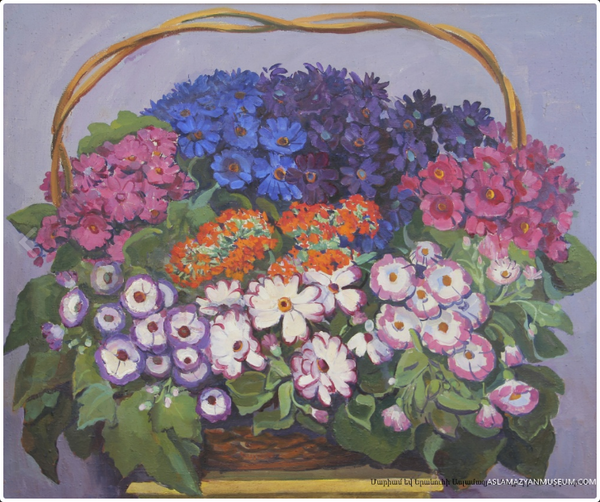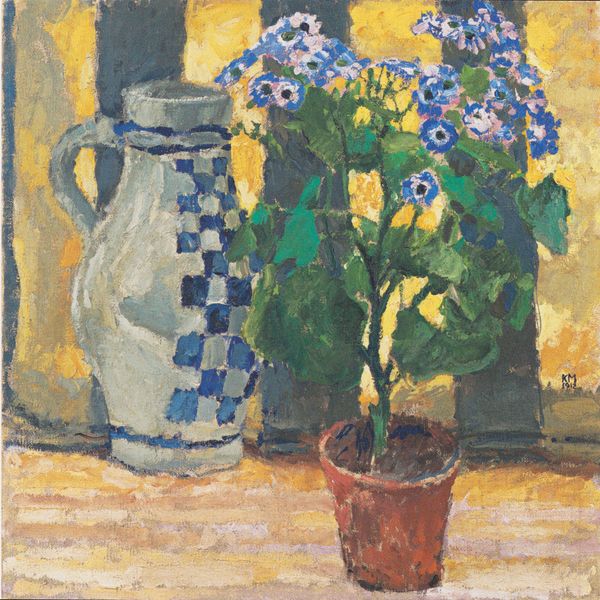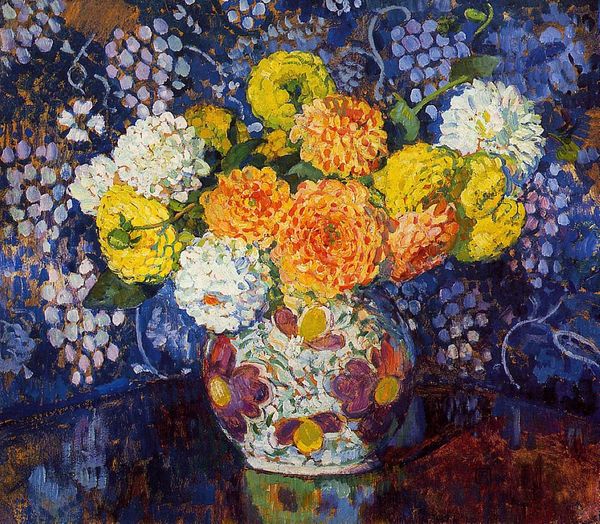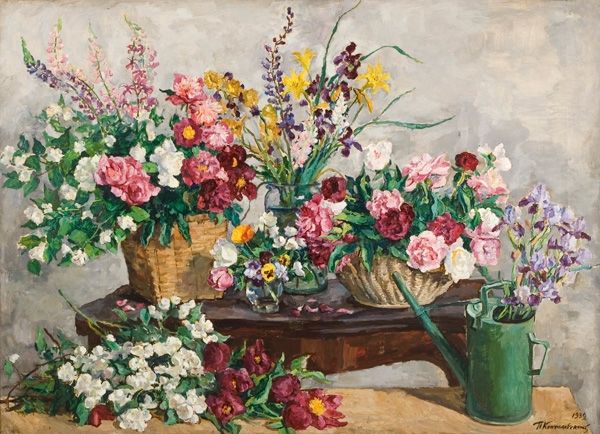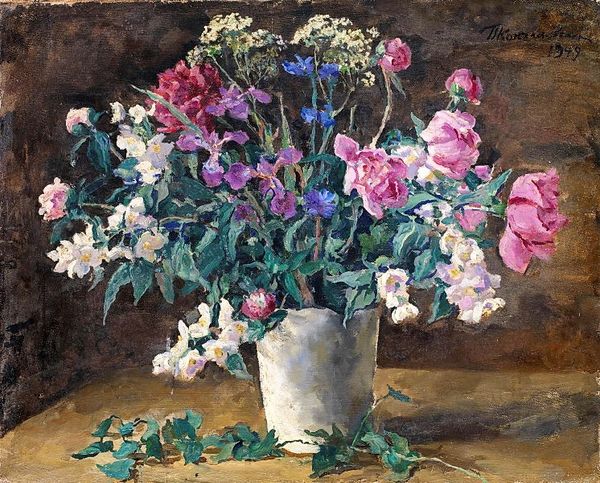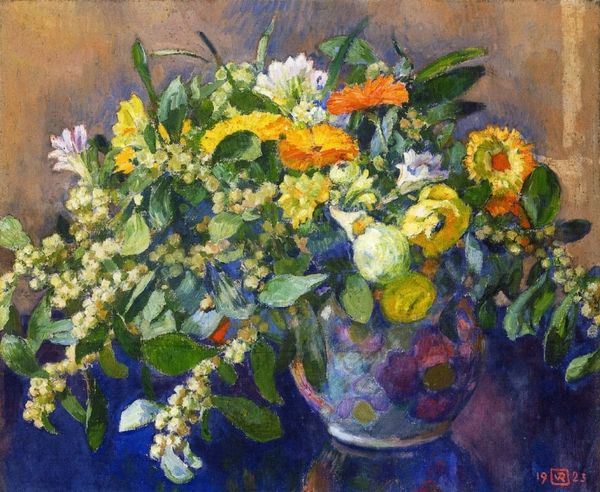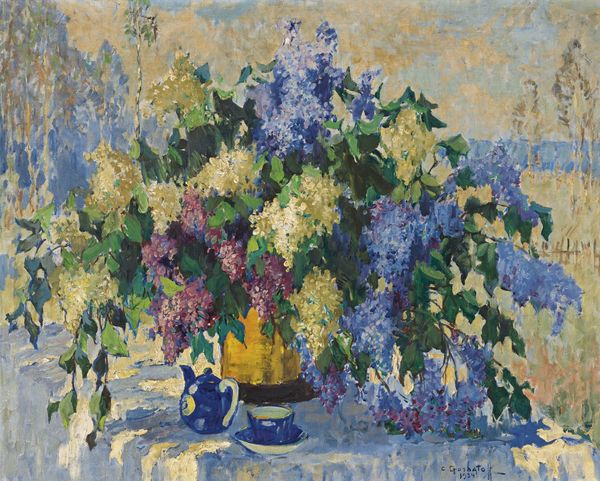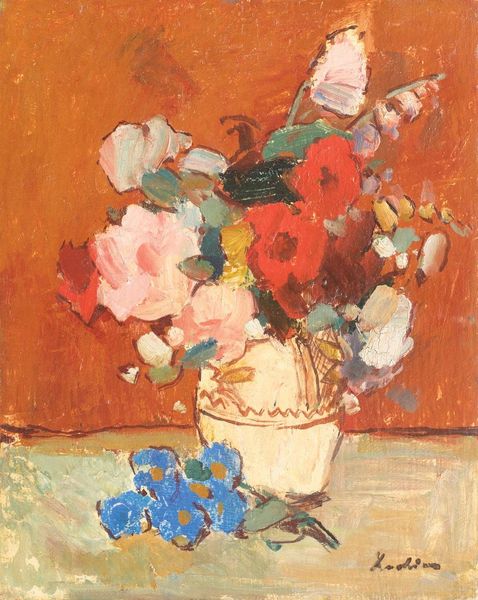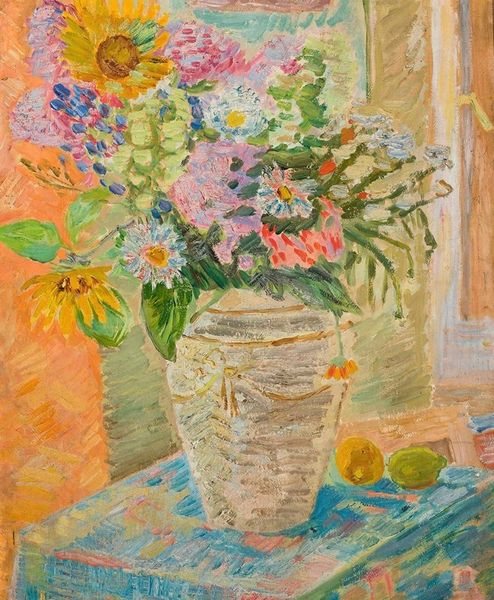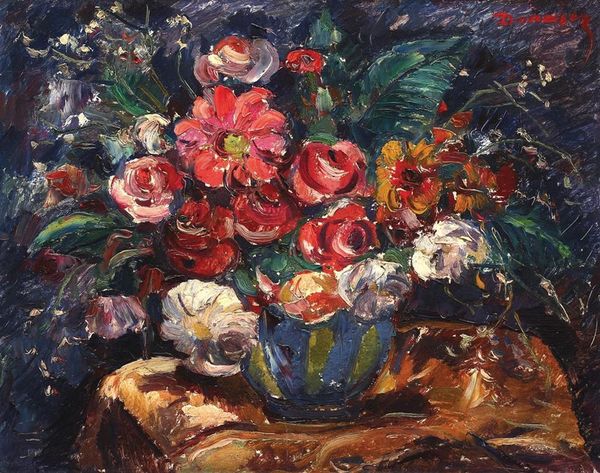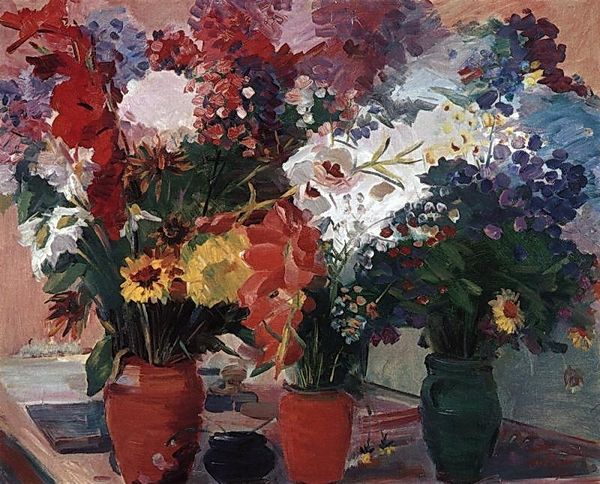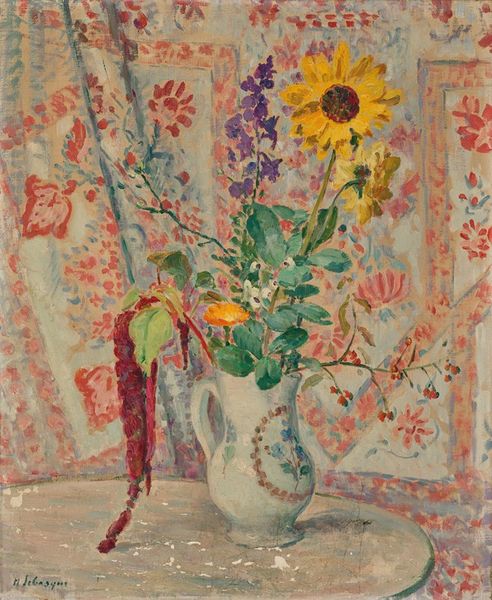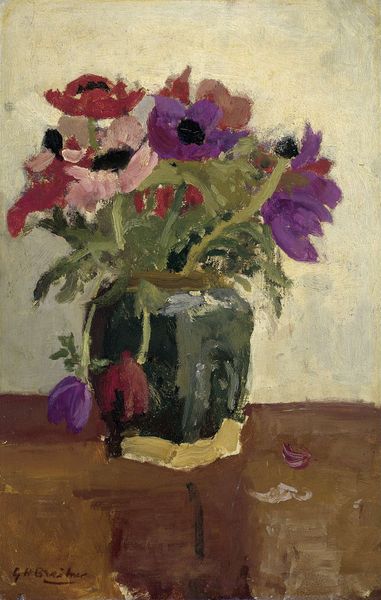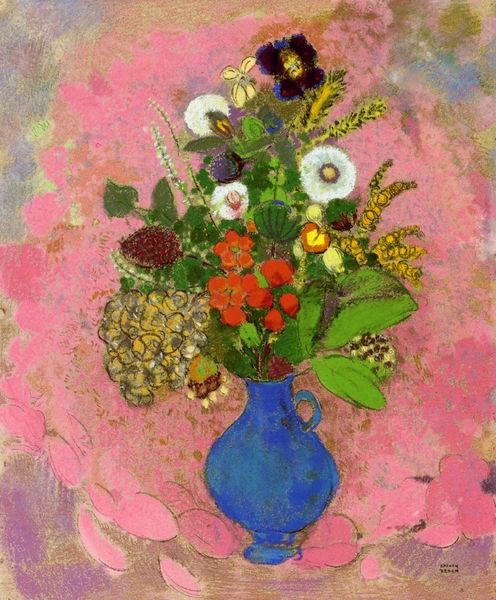
Copyright: Public domain
Curator: Konstantin Gorbatov's "Flowers," painted in 1930, is a captivating example of Post-Impressionist style realized in oil on canvas. Editor: Immediately, I'm struck by its vivid palette. The painting feels incredibly optimistic, a burst of floral defiance against, perhaps, some unseen gloom. Curator: Yes, defiance seems fitting. Gorbatov was living as an émigré in Berlin at this time, far removed from his homeland. Floral imagery throughout history has often stood in as a metaphor for memory. Editor: Interesting... Are the flowers, then, an assertion of a lost past? Look at the textures – those bold, almost aggressive brushstrokes. There’s an intensity that counters any easy notion of ‘pretty’ flower painting. Curator: The artist seems less interested in botanical accuracy and more invested in the emotional resonance of form and color, right? This piece carries within it the seeds of longing. And those cobalt blues contrasting the terracotta pots echo traditional Russian color schemes. Editor: The checkered surface below grounds these airy blossoms and adds a somewhat unsettling domesticity. Is it a tablecloth, a tile floor? The way the blue and white squares swim almost foreshadows some of the distortions later seen in Op Art. What is that tablecloth *doing*? It both supports the flowers, literally and figuratively, and threatens to upend them. Curator: What a wonderfully perceptive observation. The symbolism feels rich and multivalent, layered just as the brushstrokes themselves overlap. What we initially take as decorative flourishes become something more complex when situated in a historical and psychological framework. Editor: It moves beyond pure aesthetics. It invites us to consider not only what we see but *why* we see it this way. These flowers feel laden, even burdened by history. It reminds me that even seemingly innocuous still lifes can speak volumes about exile, memory, and resilience. Curator: An especially poignant perspective. The more we see, the more it speaks to us. Editor: Indeed. Art, after all, becomes activated in our seeing.
Comments
No comments
Be the first to comment and join the conversation on the ultimate creative platform.
